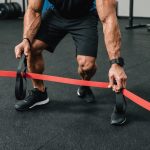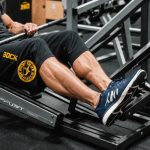Elevating your vertical jump can transform your volleyball game, leading to powerful spikes and impressive blocks. Mastering specific techniques and strength training methods boosts not only your jump height but also your confidence on the court. This guide unveils proven strategies that target muscle coordination, flexibility, and explosive power—key elements for achieving remarkable heights. Whether you're a beginner or an advanced player, these insights will help you reach new levels in your game. Take the leap toward unlocking your full potential!
Understanding Vertical Jump Mechanics
In volleyball, the vertical jump is a critical skill that requires a precise understanding of biomechanics. This understanding is not just about jumping higher but also about optimizing technique to improve performance and reduce injury risk.
Also read : Unlocking Recovery: The Role of Antioxidants in Boosting Post-Workout Healing
Overview of Vertical Jump Mechanics
The vertical jump in volleyball involves a complex interplay of movements. It starts with a rapid bending of the knees and hips, often referred to as the "loading phase," followed by an explosive extension. This sequence effectively utilizes the biomechanics of the body to generate maximum lift.
Importance of Biomechanics
Understanding the biomechanics of a jump helps athletes refine their jumping techniques. Proper mechanics ensure that the energy generated during the jump is efficiently transferred, maximizing height and power. This is crucial for actions like spiking and blocking, where every inch counts.
Have you seen this : Unlocking Peak Performance: Utilizing Video Analysis for Enhanced Stroke Efficiency in Swimming
Key Muscle Groups
Several muscle groups play a vital role in the vertical jump. The quadriceps, hamstrings, calves, and gluteal muscles are primarily responsible for the explosive force needed. Strengthening these muscles can significantly enhance an athlete's jumping ability, making biomechanics a key focus in training regimens.
Effective Warm-Up Routines
Warming up is essential for enhancing your vertical jump and preventing injuries. A proper warm-up routine prepares the body by increasing blood flow to the muscles, which aids in flexibility and performance.
Importance of Warm-Up Exercises
Engaging in warm-up exercises before jumping is crucial. These exercises activate the muscles involved in jumping, ensuring they are ready for the explosive movements required in volleyball. By doing so, athletes can improve their jump height and power while reducing the risk of strains or sprains.
Recommended Dynamic Stretching
Dynamic stretching is particularly beneficial for volleyball players. Unlike static stretches, dynamic stretches involve active movements that mimic the actions performed during a game. Examples include leg swings, arm circles, and high knees. These movements increase muscle temperature and elasticity, which enhances performance.
Injury Prevention Techniques
Preventing injuries during warm-ups is vital. Techniques such as gradually increasing the intensity of warm-up exercises and focusing on proper form can help. Incorporating a variety of movements that target different muscle groups ensures comprehensive preparation. Additionally, listening to your body and avoiding overexertion is key to maintaining long-term athletic health.
Strength Training for Vertical Jump
Strength training plays a pivotal role in enhancing vertical jump performance for volleyball players. By focusing on resistance exercises and muscle development, athletes can significantly improve their jumping ability.
Essential Strength Training Exercises
Key exercises that target the lower body are crucial for effective jump performance. Squats, lunges, and deadlifts are fundamental as they engage the quadriceps, hamstrings, and gluteal muscles. These exercises build the explosive power necessary for a higher jump. Additionally, incorporating calf raises can enhance the push-off strength, further boosting jump height.
Importance of Lower Body Strength
The lower body's strength is directly linked to jump performance. Strong leg muscles provide the foundation for explosive movements, allowing athletes to achieve greater lift. This strength not only aids in jumping but also supports stability and balance, reducing the risk of injury during play.
Structuring a Strength Training Program
To maximize results, a volleyball-specific strength training program should be well-structured. Begin with a warm-up to prepare the muscles, followed by a combination of resistance exercises focusing on the lower body. Incorporate progressive overload by gradually increasing weights to continue muscle development. Consistency and proper recovery are key to achieving optimal performance.
Plyometric Training Techniques
Plyometric training is essential for volleyball players aiming to enhance their vertical jump through explosive movements. This form of exercise focuses on rapid muscle contractions to boost power and performance.
Overview of Plyometric Exercises
Plyometric exercises are specifically designed to improve agility and power. Suitable exercises for volleyball include box jumps, depth jumps, and tuck jumps. These activities not only increase jumping height but also enhance overall athletic performance by improving coordination and reaction time.
Benefits of Explosive Movements
Incorporating explosive movements into your training can significantly improve your vertical jump. These exercises train the muscles to contract quickly and forcefully, which is crucial for actions like spiking and blocking. Enhanced explosive power translates to better on-court performance, providing a competitive edge.
Sample Plyometric Workout Regimen
A well-rounded plyometric workout for volleyball might include:
- Box Jumps: 3 sets of 10 reps
- Depth Jumps: 3 sets of 8 reps
- Tuck Jumps: 3 sets of 12 reps
Ensure to start with a proper warm-up and maintain focus on form to prevent injuries. Gradually increasing the intensity and complexity of exercises will help in achieving optimal results.
Technique and Form Improvement
Improving your jumping technique is crucial for enhancing performance in volleyball. Common mistakes in jumping form often include improper body positioning, such as leaning too far forward or backward, which can affect balance and power. Ensuring a straight alignment from head to toe during the jump can help maintain control and maximize height.
Common Form Mistakes and Corrections
- Leaning Forward: Correct this by engaging your core and keeping your chest up.
- Bent Arms: Focus on extending your arms fully to optimize reach and power.
- Uneven Foot Placement: Ensure feet are shoulder-width apart for stability.
Drills to Improve Jumping Technique
Incorporating specific form drills can significantly enhance your jumping ability. Wall jumps help practice vertical alignment, while approach jumps focus on timing and coordination. Practising these drills regularly can lead to noticeable improvements in jump performance.
Importance of Body Positioning
Proper body positioning during jumps is vital for both performance and injury prevention. Maintaining a balanced stance allows for efficient energy transfer, resulting in higher and more powerful jumps. This positioning also reduces strain on joints, lowering the risk of injury.
Nutrition and Recovery Strategies
Effective nutrition for athletes is crucial in supporting vertical jump training and overall performance. A well-balanced performance diet should include adequate protein to aid muscle repair and carbohydrates for energy. Incorporating healthy fats, vitamins, and minerals also supports bodily functions and recovery.
Nutritional Guidelines to Support Training
Athletes should focus on consuming lean proteins, such as chicken and fish, to promote muscle growth. Carbohydrates, like whole grains and fruits, provide the necessary energy for intense training sessions. Hydration is equally important, as it helps maintain peak performance levels and prevents fatigue.
Importance of Recovery in Muscle Development
Recovery is a vital component of any training regimen, as it allows muscles to repair and grow stronger. Proper recovery methods ensure that athletes can continue to train effectively without the risk of overuse injuries. Adequate rest and nutrition significantly contribute to this process.
Recommended Recovery Techniques
For volleyball athletes, incorporating techniques like foam rolling and stretching can alleviate muscle soreness. Additionally, ensuring sufficient sleep and utilizing active recovery methods, such as light swimming or cycling, can enhance muscle recovery and performance. These strategies help maintain overall athletic health and readiness for competition.
Progress Tracking and Goal Setting
Monitoring your performance tracking is essential for improving your vertical jump in volleyball. By consistently assessing your jump height, you can identify areas for improvement and celebrate milestones. Using tools like jump mats or wearable technology can provide accurate data on your training progress.
Methods to Track Vertical Jump Improvement
To effectively track your progress, consider maintaining a performance tracking journal. Record your jump height, technique observations, and any changes in your training regimen. This documentation helps visualize improvements over time and aids in identifying effective strategies.
Setting Realistic Goals
Goal setting is crucial in enhancing your vertical jump. Start by setting achievable targets based on your current ability. For instance, aim to increase your jump height by a few centimetres over a set period. Adjust goals as you progress, ensuring they remain challenging yet attainable.
Importance of Regular Assessments
Regular assessments are vital for maintaining momentum in your training progress. Schedule periodic evaluations to gauge your improvement and adjust your training plan accordingly. This approach ensures that your efforts remain aligned with your goals, fostering continuous development and motivation.
Testimonials and Success Stories
Hearing from athletes who have successfully improved their vertical jump can be incredibly motivating. Real-life examples demonstrate the tangible impact of dedicated training on performance.
Real-Life Examples of Athlete Success
Many athletes have shared their success stories about enhanced jumping abilities. For instance, a volleyball player named Sarah increased her jump height by 5 inches within six months. She credits her success to a combination of strength training, plyometric exercises, and consistent performance tracking.
Analysis of Training Methods
The methods used by successful athletes often include a mix of strength training and plyometrics. Sarah's routine involved squats and lunges, complemented by box jumps and tuck jumps. This combination helped her develop the explosive power necessary for a higher jump, showcasing the training impact on her performance.
Inspirational Stories to Motivate
These testimonials serve as powerful motivation for those on a similar journey. Seeing how others have achieved their goals through perseverance and strategic training can inspire readers to stay committed. Remember, every small improvement is a step towards your ultimate goal, and with the right approach, success is within reach.













